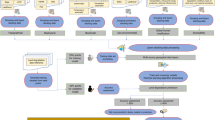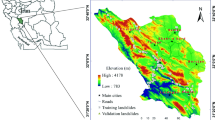Abstract
Every year, many farmers die as a result of snakebites or other envenomations all over the world. There is currently a need to identify the snakebite regions that cause severe damage in the Indian farmer’s family, especially in the study area. The study area, i.e., India’s Krishna district, is highly prone to snakebites and floods. It best suits the high yield of agricultural crops due to fertile lands and rich water resources. The present research focuses on the identification of the snakebites-prone areas using geospatial analytics based on the Area Land (AL), Rainfall (RF), Flood Zone (FZ), Snakebite (SB), River Side (RS), and Locality (L). A novel Snake Bite Impacted Area (SBIA) method is proposed and implemented to find the Geospatial predictive correlation analysis of snakebites. To measure the performance of SBIA, various popular data classification methods are tested, such as multi-class SVM, Decision Trees (DT), Boosted Trees (BT), Linear Discriminate (LD), and K-Nearest Neighbor (KNN). Among all popular techniques, the SBIA performance is high with an accuracy of 94.12, whereas the accuracy of LD is 76.5, then both SVM and KNN are 82.4, whereas DT and BT are 94.1. In addition the AUC result of SBIA is compared with existing Ecological Ninche Models to predict snakebite prone areas with location. Overall, the performance of SBIA is good, which combines spatial and non-spatial data to predict the snakebite-prone areas.
























Similar content being viewed by others
Data availability
All data associated with this study are present in the paper.
References
Abspoel M, Escudero D, Volgushev N (2021) Secure training of decision trees with continuous attributes. Proc Privacy Enhancing Technol 2021(1):167–187
Ahmed SM, Ahmed M, Nadeem A, Mahajan J, Choudhary A, Pal J (2008) Emergency treatment of a snake bite: pearls from literature. J Emerg Trauma Shock 1(2):97
Alirol E, Sharma SK, Bawaskar HS, Kuch U, Chappuis F (2010) Snake bite in South Asia: a review. PLoS Negl Trop Dis 4(1):e603
Balakrishnama S, Ganapathiraju A (1998) Linear discriminant analysis—a brief tutorial. Inst Signal Inf Process 18(1998):1–8
Banerjee RN, Siddiqui ZA (1978) Epidemiological study of snake-bite in India. In: Toxins. Pergamon, pp 439–446
Bawaskar HS (2004) Snake venoms and antivenoms: critical supply issues. J Assoc Phys India 52:11–13
Bhargava S, Kumari K, Sarin RK, Singh R (2020) First-hand knowledge about snakes and snake-bite management: an urgent need. Nagoya J Med Sci 82(4):763
Bravo-Vega CA, Cordovez JM, Renjifo-Ibáñez C, Santos-Vega M, Sasa M (2019) Estimating snakebite incidence from mathematical models: a test in Costa Rica. PLoS Negl Trop Dis 13(12):e0007914
Bou-Hamad I (2009) Discrete-Time Survival Trees. PhD Dissertation. American University of Beirut (AUB). http://biblos.hec.ca/biblio/theses/002454.PDF
Dong S (2021) Multi class SVM algorithm with active learning for network traffic classification. Expert Syst Appl 176:114885
Dong H, Gao Y, Fang Y, Liu M, Kong Y (2021) The short-term load forecasting for special days based on bagged regression trees in Qingdao, China. Comput Intell Neurosci 2021:1–16
Duvvuru R, Rao GN, Kote A, Motru VR, Swami PYLN, Thakur SS, Singh SK, Bangaru B, Godi S, Rao PJ (2018) Security Issues in geo-spatial big data analytics with special reference. In: Proceedings of international conference on remote sensing for disaster management: issues and challenges in disaster management. Springer, Berlin, p 43
Ediriweera DS, Kasturiratne A, Pathmeswaran A, Gunawardena NK, Wijayawickrama BA, Jayamanne SF, Isbister GK, Dawson A, Giorgi E, Diggle PJ, Lalloo DG (2016) Mapping the risk of snakebite in Sri Lanka—a national survey with geospatial analysis. PLoS Neglect Trop Dis 10(7):e0004813
Ediriweera DS, Kasthuriratne A, Pathmeswaran A, Gunawardene NK, Jayamanne SF, Murray K, Iwamura T, Isbister G, Dawson A, Lalloo DG, de Silva HJ (2021) Evaluating spatiotemporal dynamics of snakebite in Sri Lanka: Monthly incidence mapping from a national representative survey sample. PLoS Neglect Trop Dis 15(6):e0009447
Feng K, Tian J (2021) Forecasting reference evapotranspiration using data mining and limited climatic data. Eur J Remote Sens 54(sup2):363–371
Goldstein E, Erinjery JJ, Martin G, Kasturiratne A, Ediriweera DS, de Silva HJ, Diggle P, Lalloo DG, Murray KA, Iwamura T (2021) Integrating human behavior and snake ecology with agent-based models to predict snakebite in high risk landscapes. PLoS Neglect Trop Dis 15(1):e0009047
Greenough PG, Nelson EL (2019) Beyond mapping: a case for geospatial analytics in humanitarian health. Confl Heal 13(1):1–14
Halesha BR, Harshavardhan L, Lokesh AJ, Channaveerappa PK, Venkatesh KB (2013) A study on the clinico-epidemiological profile and the outcome of snake bite victims in a tertiary care centre in southern India. J Clin Diagn Res JCDR 7(1):122
Hansson E, Sasa M, Mattisson K, Robles A, Gutiérrez JM (2013) Using geographical information systems to identify populations in need of improved accessibility to antivenom treatment for snakebite envenoming in Costa Rica. PLoS Negl Trop Dis 7(1):e2009
Harrison RA, Cook DA, Renjifo C, Casewell NR, Currier RB, Wagstaff SC (2011) Research strategies to improve snakebite treatment: challenges and progress. J Proteomics 74(9):1768–1780
http://biblos.hec.ca/biblio/theses/002454.PDF. Accessed on 25 Jan 2020
https://hmis.nhp.gov.in/#!/standardReports. Accessed on 10 June 2021
https://www.cbhidghs.nic.in/showfile.php?lid=1160. Accessed on 02 Dec 2021
Jayanthi M, Kumaran M, Vijayakumar S, Duraisamy M, Anand PR, Samynathan M, Thirumurthy S, Kabiraj S, Vasagam KK, Panigrahi A, Muralidhar M (2022) Integration of land and water resources, environmental characteristics, and aquaculture policy regulations into site selection using GIS based spatial decision support system. Mar Policy 136:104946
Khine KL, Nyunt TS (2020) Predictive geospatial analytics using principal component regression. Int J Electr Comput Eng 10(3):2651
Khosravi P, Vergari A, Choi Y, Liang Y, Broeck GVD (2020) Handling missing data in decision trees: a probabilistic approach. arXiv preprint arXiv:2006.16341
Lynch SM, Wiese D, Ortiz A, Sorice KA, Nguyen M, González ET, Henry KA (2020) Towards precision public health: geospatial analytics and sensitivity/specificity assessments to inform liver cancer prevention. SSM-Popul Health 12:100640
Menasria A, Meddi M, Habaieb H (2022) Diachronic study of land cover of the Medjerda watershed and estimation of RUSLE-C factor using NDVI-based equation, remote sensing, and GIS. J Indian Soc Remote Sens 50:1–18
Molesworth AM, Harrison R, David R, Theakston G, Lalloo DG (2003) Geographic Information System mapping of snakebite incidence in northern Ghana and Nigeria using environmental indicators: a preliminary study. Trans R Soc Trop Med Hyg 97(2):188–192
Moon Y, Kim C, Yoon S, Kang W (2023) Identification of risk areas for gloydius snakebites in South Korea. Animals 13(12):1959
Ochoa C, Pittavino M, Babo Martins S, Alcoba G, Bolon I, de Castañeda RR, Joost S, Sharma SK, Chappuis F, Ray N (2021a) Estimating and predicting snakebite risk in the Terai region of Nepal through a high-resolution geospatial and One Health approach. Sci Rep 11(1):1–13
Ochoa C, Pittavino M, Martins SB, Alcoba G, Bolon I, de Castañeda RR et al. (2021) Estimating snakebite risk in the terai, Nepal: a high-resolution geospatial and one health analysis. 15 October 2021, PREPRINT (Version 1) available at Research Square https://doi.org/10.21203/rs.3.rs-955695/v1
Pandey V, Kipf A, Vorona D, Mühlbauer T, Neumann T, Kemper A (2016a) High-performance geospatial analytics in hyperspace. In: Proceedings of the 2016 international conference on management of data, pp 2145–2148
Pandey PC, Bajaj S, Srivastava A (2016b) A clinico-epidemiological profile of neuroparalytic snake bite: using low dose ASV in a tertiary care centre from North India. J Assoc Phys India 64(8):16–20
Pintor AF, Ray N, Longbottom J, Bravo-Vega CA, Yousefi M, Murray KA, Ediriweera DS, Diggle PJ (2021) Addressing the global snakebite crisis with geo-spatial analyses–Recent advances and future direction. Toxicon X 11:100076
Punde DP (2005) Management of snake-bite in rural Maharashtra: a 10-year experience. Natl Med J India 18(2):71
Rao R, Nisanth AM, Karindas MM, Vasiliev I, Mathai D, Dass M, Sowjanya M, Verma MK (2022) Crawling danger: as rains subsides, snakes bounce grave menace to ryots. SSRG Int J Med Sci 9(3):5–14
Saha P, Paul B (2021) Identification of potential strategic sites for city planning based on water quality through GIS-AHP-integrated model. Environ Sci Pollut Res 28(18):23073–23086
Salve PS, Vatavati S, Hallad J (2020) Clustering the envenoming of snakebite in India: the district level analysis using Health Management Information System data. Clin Epidemiol Global Health 8(3):733–738
Sathishkumar VE, Cho Y (2020) A rule-based model for Seoul Bike sharing demand prediction using weather data. Eur J Remote Sens 53(sup1):166–183
Supak S, Brothers G, Bohnenstiehl D, Devine H (2015) Geospatial analytics for federally managed tourism destinations and their demand markets. J Destin Mark Manag 4(3):173–186
Torkkola K (2001) Linear discriminant analysis in document classification. In: IEEE ICDM workshop on text mining, pp 800–806
Warrell DA (2010) Snake bite. Lancet 375(9708):77–88
Xiong L, Yao Y (2021) Study on an adaptive thermal comfort model with K-nearest-neighbors (KNN) algorithm. Build Environ 202:108026
Yamaç SS (2021) Reference evapotranspiration estimation with kNN and ANN models using different climate input combinations in the semi-arid environment. J Agric Sci 27(2):129–137. https://doi.org/10.15832/ankutbd.630303
Yanez-Arenas C, Townsend Peterson A, Rodríguez-Medina K, Barve N (2016) Mapping current and future potential snakebite risk in the new world. Clim Change 134:697–711
Yañez-Arenas C, Townsend Peterson A, Rodríguez-Medina K, Barve N (2016) Mapping current and future potential snakebite risk in the new world. Clim Change 134(4):697–711
Yousefi M, Yousefkhani SH, Grünig M, Kafash A, Rajabizadeh M, Pouyani ER (2023) Identifying high snakebite risk area under climate change for community education and antivenom distribution. Sci Rep 13(1):8191
Zacarias D, Loyola R (2019) Climate change impacts on the distribution of venomous snakes and snakebite risk in Mozambique. Clim Change 152(1):195–207
Zhang S, Li X, Zong M, Zhu X, Cheng D (2017) Learning k for KNN classification. ACM Trans Intell Syst Technol (TIST) 8(3):1–19
Funding
This study has not received any external funding.
Author information
Authors and Affiliations
Corresponding author
Ethics declarations
Conflict of interest
The authors declare that there are no conflicts of interests.
Additional information
Publisher's Note
Springer Nature remains neutral with regard to jurisdictional claims in published maps and institutional affiliations.
Rights and permissions
Springer Nature or its licensor (e.g. a society or other partner) holds exclusive rights to this article under a publishing agreement with the author(s) or other rightsholder(s); author self-archiving of the accepted manuscript version of this article is solely governed by the terms of such publishing agreement and applicable law.
About this article
Cite this article
Raju, M.V., Babu, A.S. & Rao, P.K.S. Predictive spatial correlation analysis of snakebites of Krishna District, India. Microsyst Technol 30, 625–646 (2024). https://doi.org/10.1007/s00542-023-05595-7
Received:
Accepted:
Published:
Issue Date:
DOI: https://doi.org/10.1007/s00542-023-05595-7




